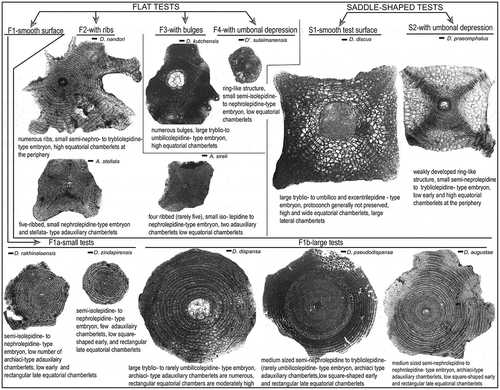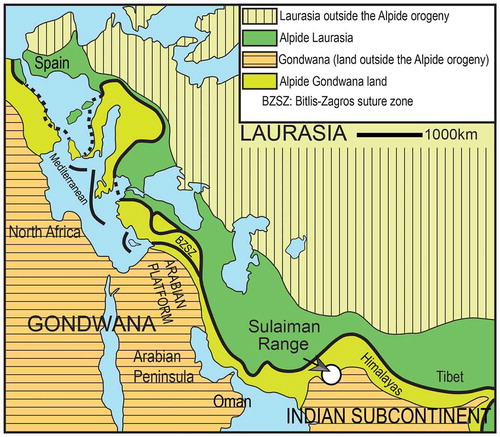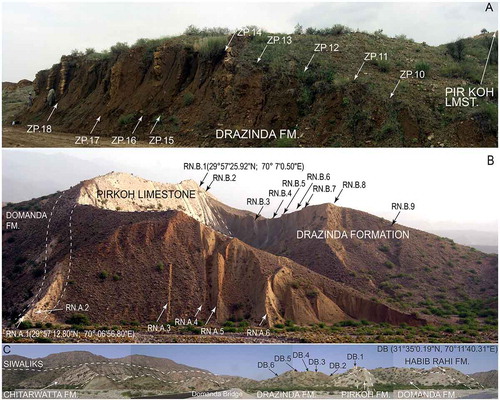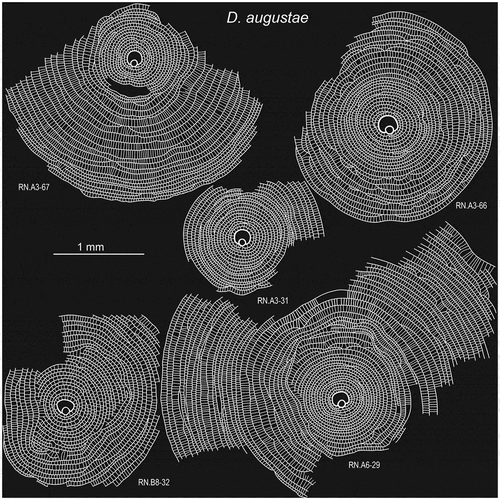Figures & data
Figure 2. Location of Sulaiman Range in Pakistan to the west of Himalayas (A), simplified geological map of the Sulaiman Range and position of the studied sections (B), and generalised stratigraphic sections and sampling points in the Pirkoh and Drazinda formations (C). Geological map is simplified from Kazmi and Rana (Citation1982). PSB: Pellatispira beds.
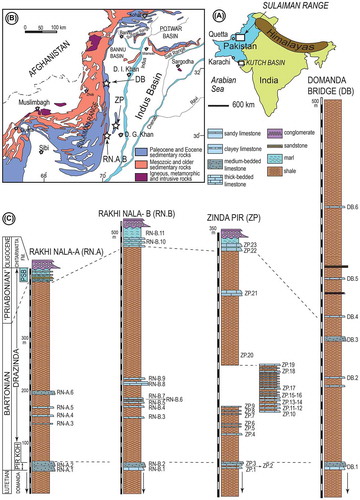
Figure 3. Generalised stratigraphy of Lutetian to Priabonian units in the Sulaiman Range with historical development of lithostratigraphic nomenclature and previous records of orthophragminids and associated LBFs. The studied interval is marked. Z refers to the ‘zones’ described by Eames (Citation1952b).
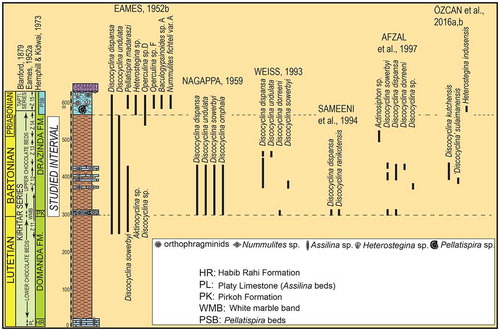
Figure 4. Field aspects of Pirkoh and Drazinda formations. Pirkoh Formation in Rakhi Nala A (A, B), Domanda (H) and Zinda Pir section (I–K), and Drazinda Formation in Rakhi Nala A (C; sample RN.A.4, D; sample RN.A.6), Rakhi Nala B (E–G) and Zinda Pir section (L).
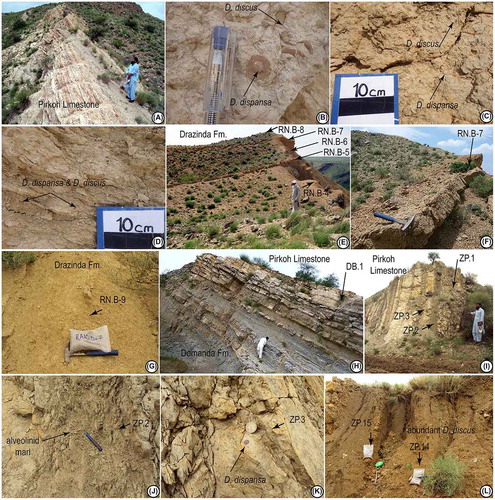
Figure 6. General test features in Tethyan orthophragminid genera (A) (after Ferràndez-Cañadell, Citation1997; Less, Citation1987; Özcan et al., Citation2016), qualitative parameters (B): a- types of embryon configurations, b- types of the adauxiliary chamberlets, c- different growth patterns of the equatorial annuli, d- types of granules and lateral chamberlets on the test surface, and parameters used in the morphometric description of orthophragminids as illustrated in D. pseudodispansa sp. nov. from sample RN.B9–79 (C). pac: principal auxiliary chamberlets.
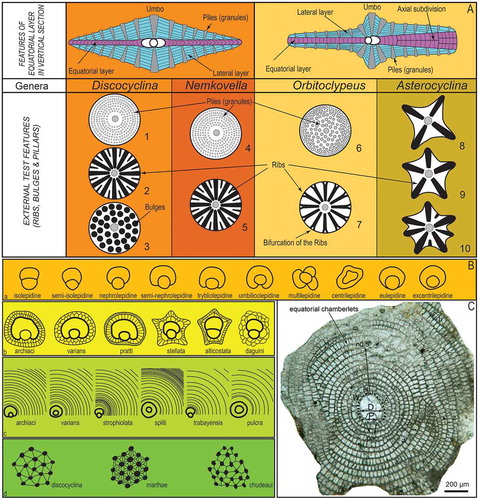
Table 1. Statistical data of orthophragminids from the Pirkoh and Drazinda formations. For the illustration and explanation of the parameters see Figure 6C. N denotes the number of specimens studied in the sample.
Figure 7. Distribution of orthophragminids and associated LBF taxa in the Rakhi Nala A and B sections.
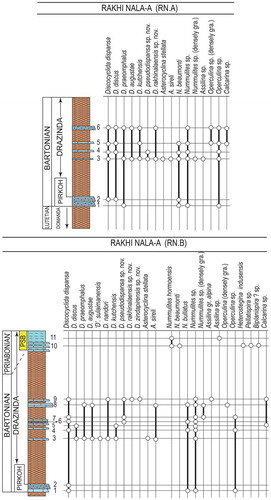
Figure 8. Distribution of orthophragminids and associated LBF taxa in the Zinda Pir and Domanda Bridge sections.
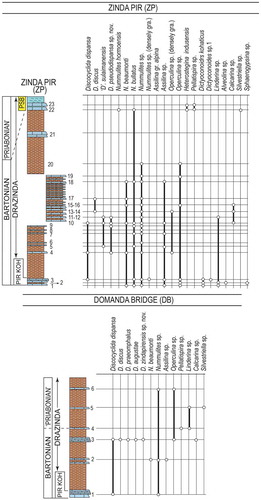
Figure 9. External test features of Discocyclina pseudodispansa sp. nov., D. dispansa, D. kutchensis, D. rakhinalaensis sp. nov., D. zindapirensis sp. nov. and D. sulaimanensis from the Drazinda Formation. Specimen RN.A6-1 is the paratype of D. kutchensis (Özcan et al., Citation2016). b: bulges, f: flange, pi: piles, u: umbo, ud: umbonal depression.
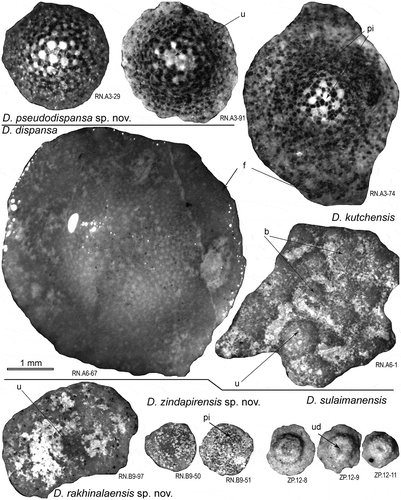
Figure 10. External test features of Discocyclina nandori, D. praeomphalus, and D. augustae from the Drazinda Formation. pi: piles, u: umbo, ud: umbonal depression, r: ribs.
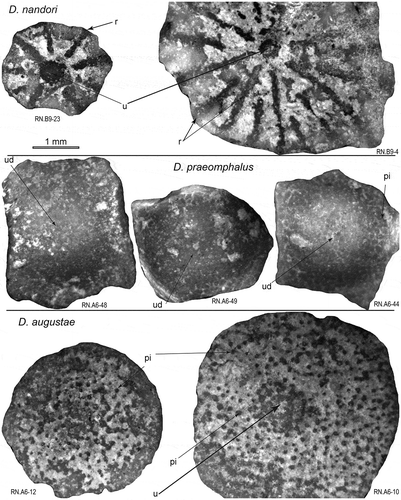
Figure 11. External test features of Discocyclina discus, and equatorial sections of microspheric forms of D. pseudodispansa sp. nov., D. kutchensis and D. augustae from the Drazinda Formation. pi: piles, u: umbo, f: flange.
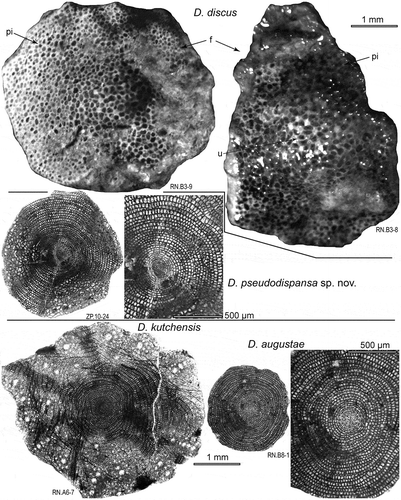
Figure 12. Axial sections of Discocyclina dispansa, D. pseudodispansa sp. nov., D. augustae, D. zindapirensis sp. nov., D. sulaimanensis, and D. rakhinalaensis sp. nov. from the Drazinda Formation. The axial section of D. dispansa (specimen FUL1-18) from the Fulra Limestone at its type-locality in Kutch Basin (India) is also illustrated for comparison.
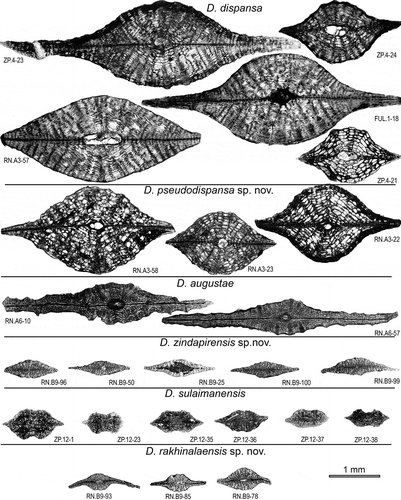
Figure 13. Comparison of the axial sections of Discocyclina sulaimanensis, D. zindapirensis sp. nov. and D. rakhinalaensis sp. nov. from the Drazinda Formation. P: protoconch, D: deutroconch, pi: piles, lcl: lateral chamberlets, eql: equatorial layer, ud: umbonal depression.
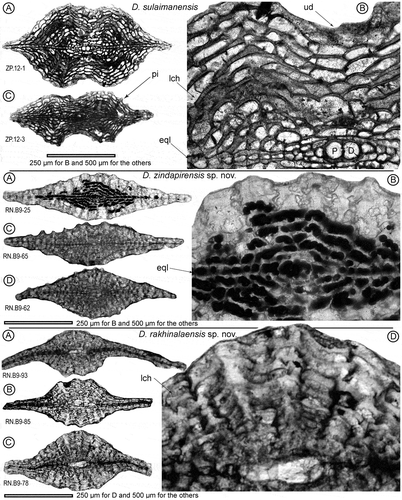
Figure 14. Axial sections of Discocyclina discus, D. praeomphalus, D. kutchensis, D. nandori and A. sireli from the Drazinda Formation.
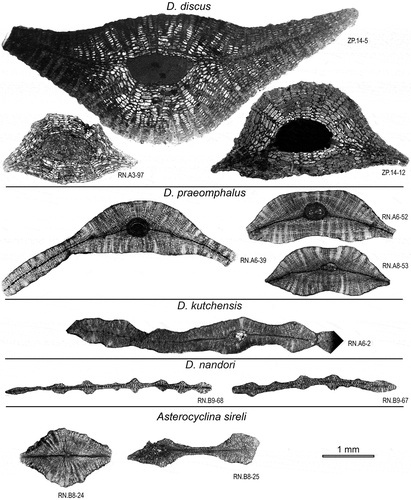
Figure 15. Equatorial sections of Discocyclina dispansa, and D. pseudodispansa sp. nov. from the Pirkoh and Drazinda formations.
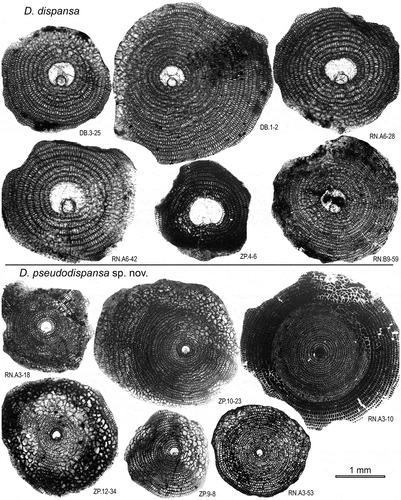
Figure 17. Equatorial sections of Discocyclina dispansa from the Pirkoh and Drazinda formations. Note that high early annuli are followed by lower and narrower ones. The sections do not illustrate the complete ontogeny.
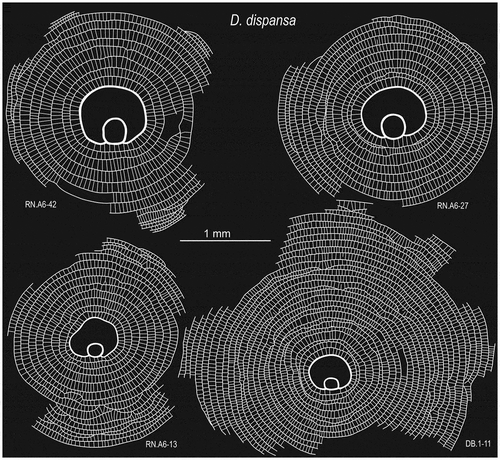
Figure 18. Equatorial sections of Discocyclina rakhinalaensis sp. nov., D. zindapirensis sp. nov. and D. sulaimanensis and D. augustae from the Drazinda Formation.
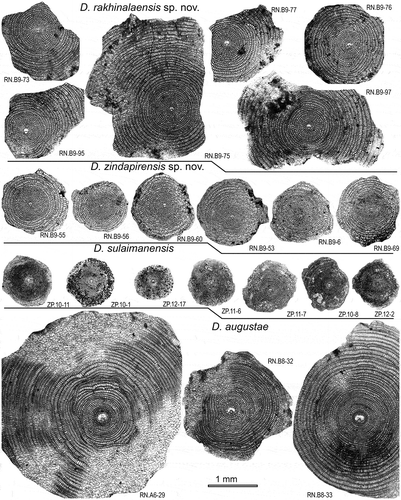
Figure 19. Comparison of embryon and equatorial chamberlets in Discocyclina rakhinalaensis sp. nov., D. zindapirensis sp. nov. and ‘D’. sulaimanensis from the Drazinda Formation.
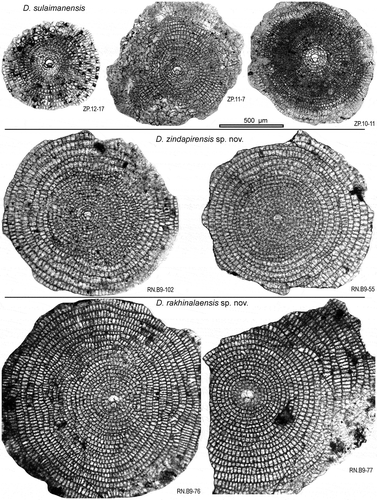
Figure 20. Comparison of embryon and equatorial chamberlets in Discocyclina rakhinalaensis sp. nov., D. zindapirensis sp. nov. and ‘D’. sulaimanensis from the Drazinda Formation.
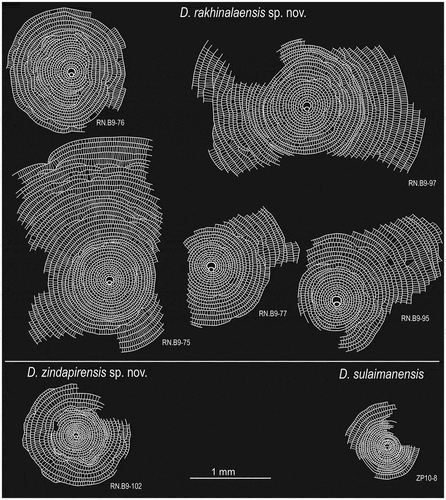
Figure 22. Equatorial sections of Discocyclina kutchensis and D. nandori from the Drazinda Formation.
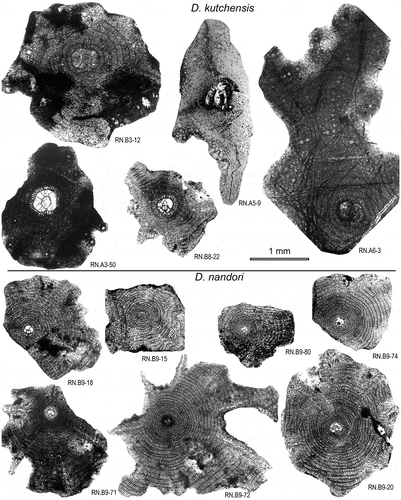
Figure 23. Comparison of embryon and equatorial chamberlets in Discocyclina kutchensis, D. nandori and D. praeomphalus from the Drazinda Formation.
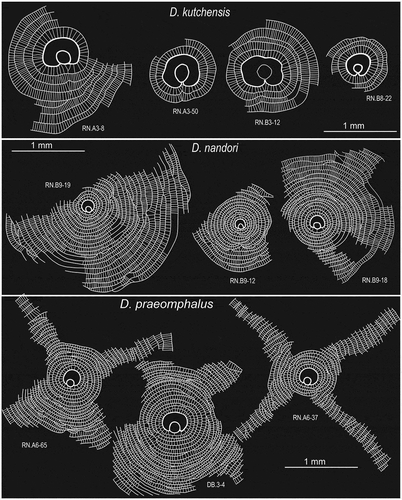
Figure 24. Embryon and equatorial chamberlets in Discocyclina praeomphalus and D. discus from the Drazinda Formation.
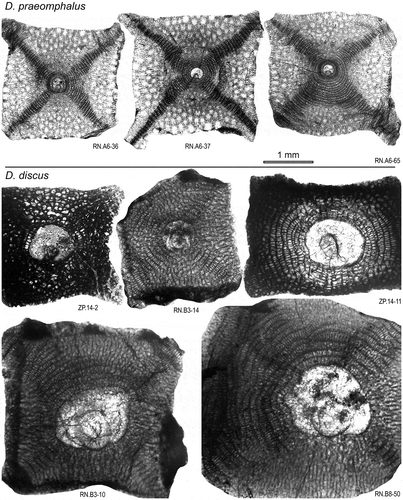
Figure 25. Embryon and equatorial chamberlets in Discocyclina discus from the Pirkoh and Drazinda formations.
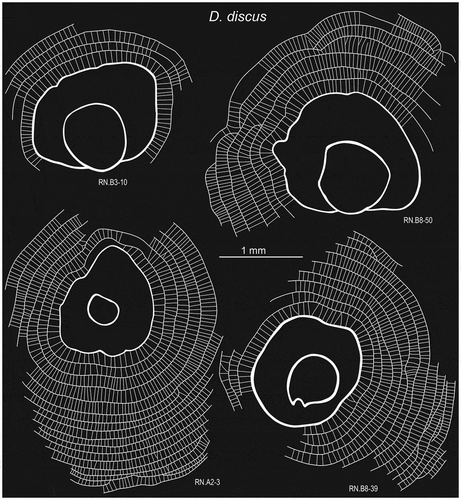
Figure 26. Comparison of embryon and equatorial chamberlets in Asterocyclina stellata and A. sireli from the Drazinda Formation.
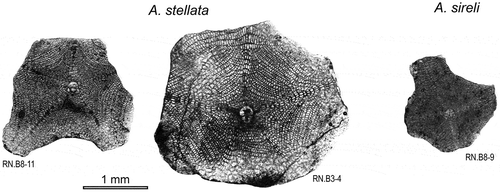
Figure 27. Identification chart of orthophragminids from the Sulaiman Range based on external test shape and corresponding equatorial sections. The flat orthophragminids are categorized into four groups based on test surface features (e.g. ribs, bulges, and central depression of the test). The flat specimens with smooth test surface are further categorized as ‘small’ (<3 mm) and ‘large’ (>3 mm). The saddle-shaped tests are subdivided into two categories as ‘smooth tests’ and tests with ‘umbonal depression’. This categorisation does not reflect a taxonomical hierarchical classification.
